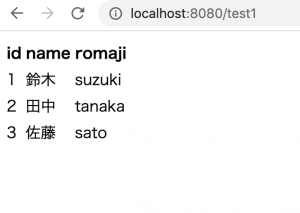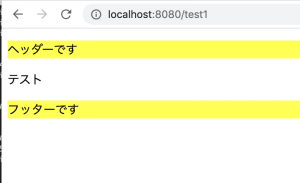$ terraform –version
Terraform v0.14.6
$ mkdir terraform
$ cd ~
.aws/credentials
[default]
AWS_ACCESS_KEY_ID=
AWS_SECRET_ACCESS_KEY=
main.tf
provider "aws" {
profile = "default"
region = "ap-northeast-1"
}
resource "aws_instance" "example" {
ami = "ami-*"
instance_type = "t2.micro"
}
$ terraform plan
An execution plan has been generated and is shown below.
Resource actions are indicated with the following symbols:
+ create
Terraform will perform the following actions:
# aws_instance.example will be created
+ resource “aws_instance” “example” {
+ ami = “ami-*”
+ arn = (known after apply)
+ associate_public_ip_address = (known after apply)
+ availability_zone = (known after apply)
+ cpu_core_count = (known after apply)
+ cpu_threads_per_core = (known after apply)
+ get_password_data = false
+ host_id = (known after apply)
+ id = (known after apply)
+ instance_state = (known after apply)
+ instance_type = “t2.micro”
+ ipv6_address_count = (known after apply)
+ ipv6_addresses = (known after apply)
+ key_name = (known after apply)
+ outpost_arn = (known after apply)
+ password_data = (known after apply)
+ placement_group = (known after apply)
+ primary_network_interface_id = (known after apply)
+ private_dns = (known after apply)
+ private_ip = (known after apply)
+ public_dns = (known after apply)
+ public_ip = (known after apply)
+ secondary_private_ips = (known after apply)
+ security_groups = (known after apply)
+ source_dest_check = true
+ subnet_id = (known after apply)
+ tenancy = (known after apply)
+ vpc_security_group_ids = (known after apply)
+ ebs_block_device {
+ delete_on_termination = (known after apply)
+ device_name = (known after apply)
+ encrypted = (known after apply)
+ iops = (known after apply)
+ kms_key_id = (known after apply)
+ snapshot_id = (known after apply)
+ tags = (known after apply)
+ throughput = (known after apply)
+ volume_id = (known after apply)
+ volume_size = (known after apply)
+ volume_type = (known after apply)
}
+ enclave_options {
+ enabled = (known after apply)
}
+ ephemeral_block_device {
+ device_name = (known after apply)
+ no_device = (known after apply)
+ virtual_name = (known after apply)
}
+ metadata_options {
+ http_endpoint = (known after apply)
+ http_put_response_hop_limit = (known after apply)
+ http_tokens = (known after apply)
}
+ network_interface {
+ delete_on_termination = (known after apply)
+ device_index = (known after apply)
+ network_interface_id = (known after apply)
}
+ root_block_device {
+ delete_on_termination = (known after apply)
+ device_name = (known after apply)
+ encrypted = (known after apply)
+ iops = (known after apply)
+ kms_key_id = (known after apply)
+ tags = (known after apply)
+ throughput = (known after apply)
+ volume_id = (known after apply)
+ volume_size = (known after apply)
+ volume_type = (known after apply)
}
}
Plan: 1 to add, 0 to change, 0 to destroy.
————————————————————————
Note: You didn’t specify an “-out” parameter to save this plan, so Terraform
can’t guarantee that exactly these actions will be performed if
“terraform apply” is subsequently run.
$ terraform apply
Error: Error launching source instance: MissingInput: No subnets found for the default VPC ‘vpc-*’. Please specify a subnet.
ちょっとvpcに問題があるので、S3にする
provider "aws" {
profile = "default"
region = "ap-northeast-1"
}
resource "aws_s3_bucket" "b" {
bucket = "terraform-test-hpscript"
acl = "private"
tags = {
Name = "My bucket"
Environment = "Dev"
}
}
$ terraform apply
An execution plan has been generated and is shown below.
Resource actions are indicated with the following symbols:
+ create
Terraform will perform the following actions:
# aws_s3_bucket.b will be created
+ resource “aws_s3_bucket” “b” {
+ acceleration_status = (known after apply)
+ acl = “private”
+ arn = (known after apply)
+ bucket = “terraform-test-hpscript”
+ bucket_domain_name = (known after apply)
+ bucket_regional_domain_name = (known after apply)
+ force_destroy = false
+ hosted_zone_id = (known after apply)
+ id = (known after apply)
+ region = (known after apply)
+ request_payer = (known after apply)
+ tags = {
+ “Environment” = “Dev”
+ “Name” = “My bucket”
}
+ website_domain = (known after apply)
+ website_endpoint = (known after apply)
+ versioning {
+ enabled = (known after apply)
+ mfa_delete = (known after apply)
}
}
Plan: 1 to add, 0 to change, 0 to destroy.
Do you want to perform these actions?
Terraform will perform the actions described above.
Only ‘yes’ will be accepted to approve.
Enter a value: yes
aws_s3_bucket.b: Creating…
aws_s3_bucket.b: Still creating… [10s elapsed]
aws_s3_bucket.b: Creation complete after 11s [id=terraform-test-hpscript]
なるほど、terraformの意味がわかった。確かに便利だわ。





